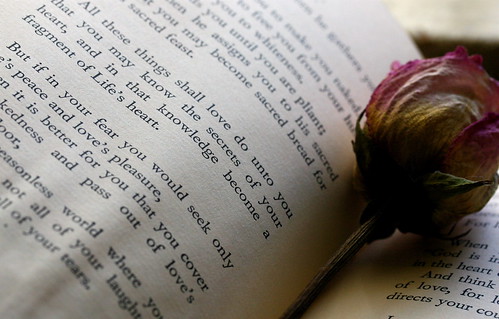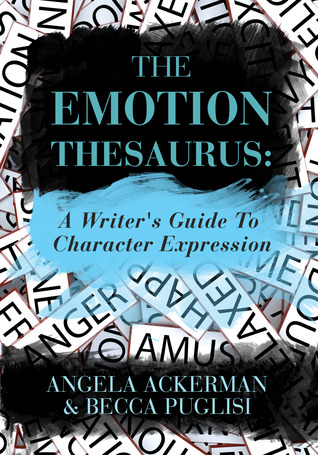 |
| Photo credit: mpclemens on Flickr |
What’s so special about October, you ask? Well, of course, it’s the month before NaNoWriMo (National Novel Writing Month, A.K.A.: Lock Self Into Writing Cave And Write Like Hell Month), also known as NaNoPrepMo, at least in my head.
As most of you know, NaNoWriMo starts on the first of November and lasts until the end of the month, in which many writers (hopefully) emerge exhausted and pale with 50,000 shiny new words written (or tan and full of energy with 50,000 new words, in which case the rest of us are jealous).
I may very well write a post later about why you should consider participating, but today I want to talk about how to best prepare for the big event.
- Decide on an idea. This kind of goes without saying, but the sooner you think of your NaNo novel idea, the more time you’ll have to let it develop before the mad dash of November. And you’ll be writing so quickly come November, that you’ll be glad for every iota of pre-decided information you have.
- Start plotting. If you’re a pantser, then you’re probably going to skip this step. But if you’re even slightly open to plotting (even a very flexible, loose plot), then I highly recommend that you try plotting in advance. As a regular fast-drafter, I can tell you that the best tip I’ve ever received on fast-drafting is to know what you’re writing. Just about every time I’ve ever encountered writer’s block, it was because I didn’t know what was next, or how to connect the dots between two plot points (in which case I plotted in more detail and voila! The words returned).
Point is, when you’re writing like a speed demon for NaNoWriMo, it’ll be much easier to keep the pace if you actually know what happens (or at least have a vague idea). Whether it’s flashcard plotting, a brief list of events or a twenty-page outline, NaNoWriMo will be so much smoother if you get your events in order before the race begins. - Tell family/friends about your November plans. We writers tend to withdraw in November. We sneak away to our caves and shoot daggers (with our eyes, of course) at anyone who dares interrupt our precious writing time. Letting your friends and family know in advance about why you’re going to disappear for thirty days can help save you some aggravation and disappointed people.
- Connect with fellow NaNo writers. Do you have a Twitter? If you don’t, I recommend getting one and searching hashtags like #NaNoWriMo to find fellow NaNo writers. It’s early, but people are already thinking about it (like me), and you’ll be glad for the support of your fellow exhausted/excited/slightly crazed writers come November.
- Familiarize yourself with the website. I’m not sure when exactly, but the website occasionally goes down before the big event to prepare the servers and give the site a fresh upgrade. That’s normal, so don’t panic when it happens.
But until then, it doesn’t hurt to set up your account and browse through the site, just to get to know it if you don’t already.
UPDATE: The blackout has happened and the shiny new website is up! Have fun exploring. :) - Investigate distraction-free writing tools. Like Write or Die. Or Freedom. Or Write or Die. (Have I mentioned how much I love Write or Die?) They come in handy when you're trying to write quickly.
- Mentally prepare yourself. In order to reach the goal of 50,000 words and claim your NaNoWriMo victory, you’ll need to write 1,667 words a day, assuming you write every day of the month. 1,667 words isn’t all that bad, and some days you’ll fly through them and roll right into 2 or 3k. But there are days when you’re going to be exhausted, when time is really short, when every word is fighting you, and those are the days you need to be prepared for.
It’s ok to miss a day. It’s also ok to get stuck and write terribly and cry over your keyboard.
Here’s what you’re not going to end up with at the end of the month: a masterpiece. You’re writing the first portion of a book (50k isn’t usually a full-length MS, although it can be depending on the category/genre) in a month. It’s going to be messy and occasionally ugly and embarrassing. And that’s totally ok.
The point isn’t to come out of NaNoWriMo with a gleaming, beautiful draft. The point is to get the first portion of a draft finished, so that you can complete your book and then revise it later.
You’re writing the bare bones. They aren’t going to be pretty, but they don’t need to be. - Get excited. You’re going to write a book. Or a portion of one, anyway. You. A book. Yours. It’s something to be excited about, it’s something to celebrate, even if the writing is so horrendous that you cringe when you read it back. NaNoWriMo is exhausting, yes, but it’s also exciting because you’re doing something that millions of people only ever dream about—you’re writing a book, and it’s all yours.
For those who have (or are going to) participate in NaNoWriMo, what do you do to prepare?
Twitter-sized bites:
Considering #NaNoWriMo this year? Here are some steps you may want to take before November. (Click to tweet)
Gearing up for this year's #NaNoWriMo? Writer @Ava_Jae shares some tips to help you prepare for the big event. (Click to tweet)











